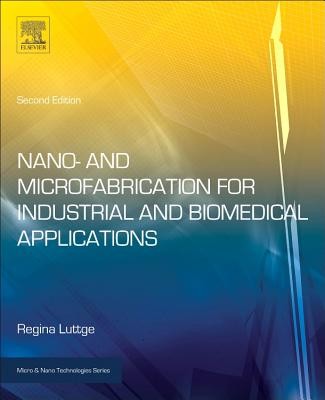
- We will send in 10–14 business days.
- Author: Regina Luttge
- Publisher: William Andrew
- Year: 2016
- Pages: 278
- ISBN-10: 0323378285
- ISBN-13: 9780323378284
- Format: 19.6 x 23.9 x 1.8 cm, kieti viršeliai
- Language: English
- SAVE -10% with code: EXTRA
Nano- And Microfabrication for Industrial and Biomedical Applications (e-book) (used book) | bookbook.eu
Reviews
Description
Nano- and Microfabrication for Industrial and Biomedical Applications, Second Edition, focuses on the industrial perspective on micro- and nanofabrication methods, including large-scale manufacturing, the transfer of concepts from lab to factory, process tolerance, yield, robustness, and cost.
The book gives a history of miniaturization and micro- and nanofabrication, and surveys industrial fields of application, illustrating fabrication processes of relevant micro and nano devices. In this second edition, a new focus area is nanoengineering as an important driver for the rise of novel applications by integrating bio-nanofabrication into microsystems. In addition, new material covers lithographic mould fabrication for soft-lithography, nanolithography techniques, corner lithography, advances in nanosensing, and the developing field of advanced functional materials.
Luttge also explores the view that micro- and nanofabrication will be the key driver for a "tech-revolution" in biology and medical research that includes a new case study that covers the developing organ-on-chip concept.
EXTRA 10 % discount with code: EXTRA
The promotion ends in 22d.19:39:29
The discount code is valid when purchasing from 10 €. Discounts do not stack.
- Author: Regina Luttge
- Publisher: William Andrew
- Year: 2016
- Pages: 278
- ISBN-10: 0323378285
- ISBN-13: 9780323378284
- Format: 19.6 x 23.9 x 1.8 cm, kieti viršeliai
- Language: English English
Nano- and Microfabrication for Industrial and Biomedical Applications, Second Edition, focuses on the industrial perspective on micro- and nanofabrication methods, including large-scale manufacturing, the transfer of concepts from lab to factory, process tolerance, yield, robustness, and cost.
The book gives a history of miniaturization and micro- and nanofabrication, and surveys industrial fields of application, illustrating fabrication processes of relevant micro and nano devices. In this second edition, a new focus area is nanoengineering as an important driver for the rise of novel applications by integrating bio-nanofabrication into microsystems. In addition, new material covers lithographic mould fabrication for soft-lithography, nanolithography techniques, corner lithography, advances in nanosensing, and the developing field of advanced functional materials.
Luttge also explores the view that micro- and nanofabrication will be the key driver for a "tech-revolution" in biology and medical research that includes a new case study that covers the developing organ-on-chip concept.


Reviews